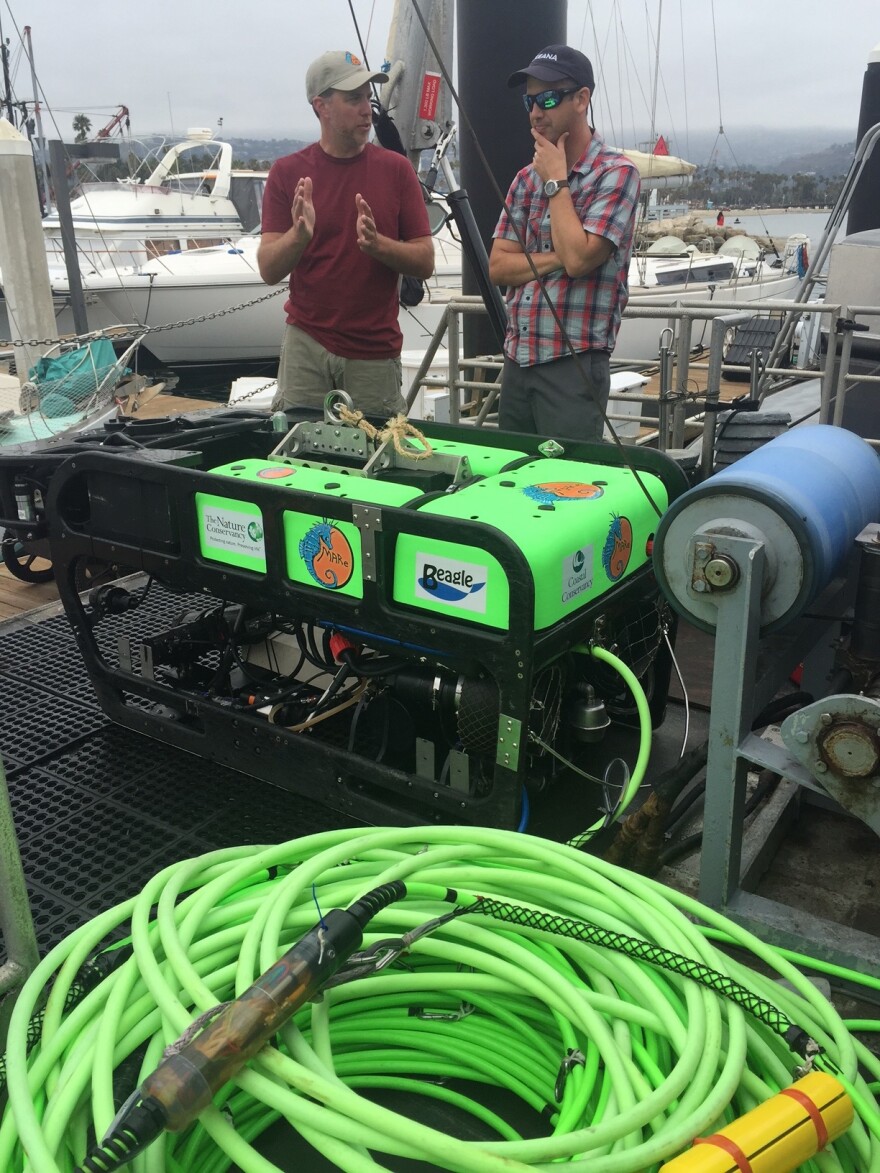With our free press under threat and federal funding for public media gone, your support matters more than ever. Help keep the LAist newsroom strong, become a monthly member or increase your support today.
Ocean advocates map SoCal seafloor in bid to protect it

This week, the conservation and advocacy group Oceana is surveying the largely unexplored sea floor off the coast of Southern California. The group is hoping to use findings from the survey to justify the limiting of bottom trawling in those areas.
"If we can demonstrate that these are sensitive habitats, that there are long lived corals and sponges there, then it’s much more compelling to fishery managers to protect those places," said Ben Enticknap, a senior scientist with Oceana.
Oceana is looking for environmentally sensitive habitats that could be home to species of rockfish and ground fish. They're also looking for coral beds, rocky areas and kelp forrests, areas which are vulnerable to damage from bottom trawling. The fishing practice, which uses weighted open nets dragged across the ocean floor, is controversial and maligned by environmental advocacy groups like Oceana.
But environmental preservation and bottom trawling aren't always at odds as a study showed last year .
California and Oregon have banned trawling in state waters, which extend up to three miles off shore. In 2006 that ban was extended to federal waters and about 300,000 square miles were added to the ban, with certain environmentally significant zones singled out.
New proposals were submitted in 2013 to modify the existing restricted areas, one of which was Oceana's. They submitted their proposal to the Pacific Fishery Management Council along with seven other groups. The PFCM, which regulates fishing off of the West Coast, is in the process of deciding which proposals to consider.
So far the fisheries council has narrowed things down to three proposals, all of which further limit the areas available for fishing. But, while Oceana's doesn't make more areas available for trawling vessels, proposals like the one from Brad Pettinger do. He's the Director of the Oregon Trawl Commission, an industry group, who worked along with the National Resources Defense Council to draw up a plan they could submit.
"Most fishermen would like to have less regulations than more, like anybody else would. But I think that people see the inherit value," he said. "We don't want to have somebody coming to an area pulling up coral[...] it makes us look bad. Because we are good stewards."
Pettinger argues that Oceana's proposal is too restrictive.
"There are only 60 or 70 bottom trawlers on all of the West Coast in its entirety right now," he said. "Twenty years ago there was like 500[...] "So, if 500 trawlers without gear restrictions whatsoever didn't destroy [the environmentally sensitive areas], what makes you think it can be destroyed now?"
But Enticknap from Oceana thinks that precautionary measures need to be taken to protect the fragile environmental zones, even if they haven't been trawled before.
"If we can identify an important area now and protect it before it begins, that's really kind of the best thing because there's no immediate economic impact and you're protecting these habitats before they're destroyed, before these corals are toppled," he said.
November is crunch time, as that's when preliminary decisions will be made by the PFMC with a final decision coming in early 2017.








